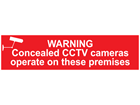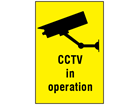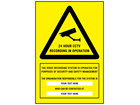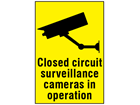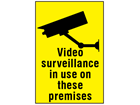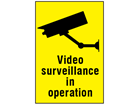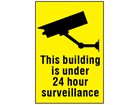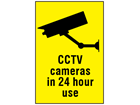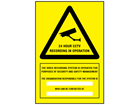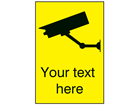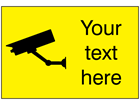Do You Legally Need to Display CCTV Signs?
If you use closed-circuit television cameras, you must have visible CCTV warning signs or CCTV in operation signs to comply with the Data Protection Act 1998, Human Rights Act 1998, and the Regulation of Investigatory Powers Act 2000.
CCTV camera warning signs are usually placed at the entrance point of the CCTV operating zone, as well as at other points around the site to remind visitors that cameras are in use.
Do I Need a Sign for CCTV at My House?
If your CCTV cameras exclusively record your own residential property, you do not legally need to display signage about it. However, if your CCTV cameras record any public area, such as roads or parks, you must display signage stating that there is CCTV in operation
CCTV Rules and Regulations
As mentioned above, CCTV usage is governed by the Data Protection Act 1998, Human Rights Act 1998, and the Regulation of Investigatory Powers Act 2000. These laws are required as the UK has almost 2 million CCTV cameras in use, equating to one camera per 32 people.
For guidance, you should always refer to The Surveillance Camera Commissioner. While these guidelines do change slightly every year, they broadly advise for the use of clear signs and respecting the rights of others’ privacy.
CCTV cameras will almost always capture images of people outside of your property. This means your cameras must:
- Be paired with signs that state CCTV is currently in operation
- Store images securely and only use the footage for security purposes
- Protect footage and data from third parties
When it comes to employees, remember that they have the same rights as the public. They must be informed when and if they are under CCTV surveillance, and they retain the right to see footage of themselves upon request.
Overall, if you want to make sure you’re within the rules, use our CCTV camera signs.
Where to Place CCTV Signs
Just having a CCTV sign isn’t enough; you need to know how to use the signs, too. If the signs cannot be read or are obstructed, you will still be legally liable.
To ensure this doesn’t happen, place the CCTV sign at eye level. Usually, signs are placed on the wall underneath the camera.
For larger premises, it is beneficial to have a CCTV system & a series of CCTV camera warning signs around the camera, to be sure that everyone can see it. It’s also a decent courtesy to give people plenty of warning before being recorded. Our other security signs also help give notice to approaching visitors.

